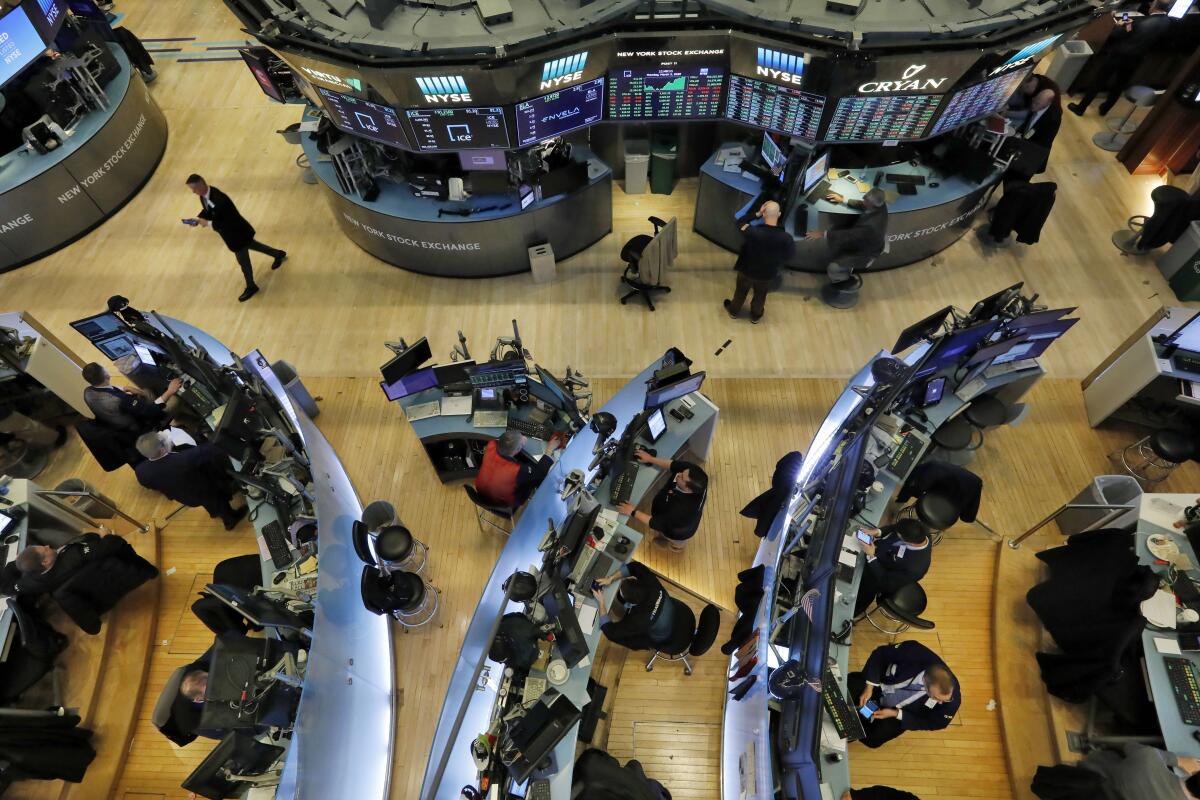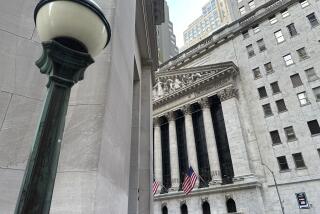Wall Street wraps its miserable September with another weak finish

- Share via
Wall Street closed out its worst month and quarter of the year with more losses Friday.
The Standard & Poor’s 500 slipped 0.3% after a gain from the morning withered, and the majority of stocks within the index sank. The Dow Jones industrial average fell 158 points, or 0.5%, and the Nasdaq composite edged higher by 0.1%.
Solid early gains for stocks faded as pressure built from within the bond market. After easing earlier in the day on encouraging signals about inflation, Treasury yields got back to rising as the day progressed.
The 10-year Treasury yield returned to 4.58%, where it was late Thursday, after dipping to 4.52%. It’s again near its highest level since 2007.
Treasurys are seen as some of the safest investments possible, and when they pay higher yields, investors are less likely to pay high prices for stocks and other riskier investments. That’s a big reason why the S&P 500 dropped 4.9% in September to drag what had been a big gain for the year down to 11.7%
An inflation gauge closely tracked by the Federal Reserve rose in August, boosted mainly by higher gas prices.
Treasury yields have been climbing sharply as Wall Street accepts a new normal where the Federal Reserve is likely to keep interest rates high for longer. The Fed is trying to push still-high inflation down to its target, and its main tool of high interest rates does that by trying to slow the economy and hurting prices for investments.
The Fed’s main interest rate is at its highest level since 2001, and the central bank indicated last week it may cut interest rates next year by less than it earlier expected.
Friday’s economic data showed that not only was inflation a touch cooler than expected in August, but so was growth in spending by U.S. consumers. That can be a positive for inflation because it means not as many dollars are pouring into purchases. That in turn could give companies less encouragement to try to raise prices further. But it may also dent what’s been a big driver keeping the U.S. economy out of a recession.
“It came to a boil during a hot summer, and the temperature is really starting to come down,” Brian Jacobsen, chief economist at Annex Wealth Management, said of spending growth by U.S. consumers. “Higher energy prices, student loan debt repayments and real disposable incomes that have been on a declining trajectory since June doesn’t bode well.”
Oil prices have jumped to their highest level in more than a year, which is pressuring the economy by raising fuel costs for everyone. A barrel of U.S. crude sank 92 cents Friday to settle at $90.79, but it’s still up sharply from $70 in June. Brent crude, the international standard, also weakened.
The resumption of U.S. student-loan repayments, meanwhile, may funnel more dollars away from the spending by consumers that has helped to keep the economy afloat.
Another more immediate threat for the economy could hit soon as the U.S. government nears another possible federal shutdown. Markets have broadly held up rather well during past shutdowns, but a few crucial economic reports are scheduled for the next couple of weeks.
The latest monthly update on the U.S. jobs market is due next week, with a couple of important reports on inflation coming the following week. Postponements of such reports could complicate things for the Fed, which has insisted it will make upcoming decisions on interest rates based on what incoming data say about the economy. The Fed’s next meeting on rates ends Nov. 1.
The Federal Reserve left its key interest rate unchanged for the second time in its last three meetings, a sign that it’s moderating its fight against inflation.
On Wall Street, Nike jumped 6.7% after reporting better profit for the latest quarter than analysts expected. Strength overseas helped it make up for some declines in North America.
Blue Apron soared 134.5% after the meal kit company said it was being bought by Wonder Group for $13 per share in cash in a deal valued at $103 million.
On the losing end of Wall Street were stocks of energy producers, hurt by the slide in oil’s price. Energy stocks in the S&P 500 fell 2% as a group, more than double the loss of any of the other 10 sectors that make up the index.
Exxon Mobil fell 1.6% and Schlumberger dropped 4.3%. Energy stocks, though, remain the market’s standout performers since the summer.
Shares of Ford and General Motors slipped after the United Auto Workers said it will expand its limited strike to include another facility for each. Ford fell 1.1%, and GM dipped 0.6%.
All told, the S&P 500 slipped 11.65 points to 4,288.05. The Dow dropped 158.84 to 33,507.50, and the Nasdaq added 18.05 to 13,219.32.
In stock markets abroad, indexes were modestly higher in Europe after exchanges were closed across much of Asia.
AP writers Matt Ott and Elaine Kurtenbach contributed to this report.
More to Read
Inside the business of entertainment
The Wide Shot brings you news, analysis and insights on everything from streaming wars to production — and what it all means for the future.
You may occasionally receive promotional content from the Los Angeles Times.












